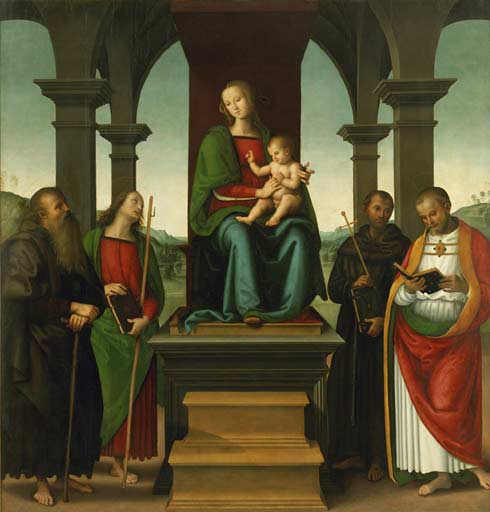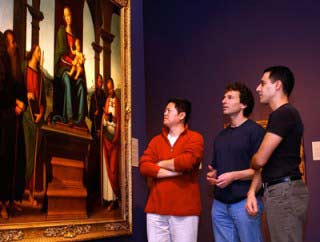Method to distinguish fake paintings
Artists have long relied on science to distinguish original paintings from copy paintings. For example, they use the rays of infrared and infrared rays to identify materials on the surface of the painting and from which can know the age of the painting. But last year, scientists at Dartmut University (USA) found a completely new method to assess the authenticity of a painting masterpiece.
According to this method, the paintings will be included in the computer to record data on the characteristics of the paint. The smallest differences in the structure of drawings will be found by computers to help people distinguish a true masterpiece from fake paintings.
Initially, scientists tested on Bruegel's original paintings to find out how they differ from many of his paintings. Interestingly, the results of the computer coincide with the opinions of those who understand Bruegel: Among the paintings included in the assessment are eight works that are 'genuine', the rest are copies. .
They then studied Perugino's supposedly "Mother and four Saints" to clarify the problem: the artist himself drew the whole picture or gave some details to his students. painting. Many researchers are inclined to the second hypothesis and the analytical results on computers also show that the drawings belong to four painters. This makes the Italians still insist on their personal copyright to their countrymen.

Perugino's "Mother and the Four Saints" painting (Photo: cs.dartmouth)
According to Professor David Donoho at Stanford University, computers do not work badly, but need to be assessed further because the number of pictures put into the test is too small. But some other experts are not so optimistic. Lorens Kenter, an officer at the Metropolitan Museum, said that the computer only analyzed a few aspects of the artist's syntax but did not pay attention to the important elements that show their skills as a way of mixing colors. such as. When analyzing Perugino's 'Mother and the Four Saints' ,
 Experts are looking at Perugino's "The Lady and the Four Saints" picture (Photo: primidi) Kenter made a slightly different observation than the results from computers. According to him, in addition to Perugino, there are two more artists, in which a talented person is far from Perugino, but the second is technically superior to Perugino. The evaluation of such an artistic level is beyond the capabilities of computers. Therefore, this method needs to be further refined.
Experts are looking at Perugino's "The Lady and the Four Saints" picture (Photo: primidi) Kenter made a slightly different observation than the results from computers. According to him, in addition to Perugino, there are two more artists, in which a talented person is far from Perugino, but the second is technically superior to Perugino. The evaluation of such an artistic level is beyond the capabilities of computers. Therefore, this method needs to be further refined.
In 2001, the idea of using mathematics with parameters to distinguish real pictures from fake paintings came to mathematician Daniel Rokmor, one of the authors of the new method, when he went to the Metropolitan Museum to view the exhibition. Bruegel original paintings beside copy pictures. Working in partnership with Rokmor is programming expert Hani Ferid, who is very experienced in finding differences represented by numbers through statistical methods. After being transferred by the Metropolitan Museum for photos of the paintings, the scientists scanned the image to determine the parameters for the paint. However, they initially used only black and white images because they wanted to limit the number of parameters and this was the weakness that art researchers found necessary to overcome.
'Of course, the work is still incomplete - Professor Rokmor says - But it's interesting that mathematics can help us do a job that art researchers have been doing for a long time based on on experience and intuition '.
After the paintings of Bruegel and Perugino, mathematicians planned to study Raphael because it was the most sought after art by the artists.
The mathematicians marveled that until now the art researcher still did not use computer help. 'Statistical methods have been recognized in many fields, it is time to use them in the field of art' - Professor Donoho said.
Pearl league
- How to distinguish real milk and very good fake milk
- Instructions on how to distinguish the most real and fake cosmetics
- Detecting fake pictures by phone
- Instructions to distinguish fake sanitary napkins causing cancer
- Tips to help you distinguish true and fake Nike shoes in a standard way
- How to distinguish real dry beef and fake super dry beef
- Tips to distinguish wine, real beer - fake when used
- How to recognize real honey, fake honey
- How to distinguish simple, fake fake medical masks
- 5 ways to identify standard fake plastic rice without correction
- Distinguish real and fake insulation films?
- How to identify fake gas, poor quality gas
 'Barefoot engineer' invents a pipeless pump
'Barefoot engineer' invents a pipeless pump Process of handling dead pigs due to disease
Process of handling dead pigs due to disease Radiometer
Radiometer Warp Engine: Technology brings us closer to the speed of light
Warp Engine: Technology brings us closer to the speed of light